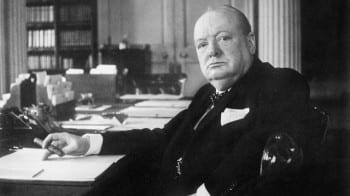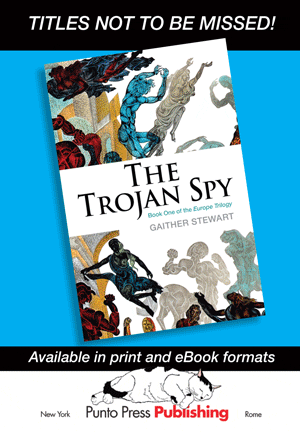The British colonialists without all the adornments and self-flattering mumbo jumbo they have used for centuries to justify their ruthless rapaciousness. And they are still at it, as caporegimi of the Washington mafia.—Editor.
 “I have traveled across the length and breadth of India and I have not seen one person who is a beggar, who is a thief. Such wealth I have seen in this country, such high moral values, people of such caliber, that I do not think we would ever conquer this country, unless we break the very backbone of this nation, which is her spiritual and cultural heritage, and, therefore, I propose that we replace her old and ancient education system, her culture, for if the Indians think that all that is foreign and English is good and greater than their own, they will lose their self-esteem, their native culture and they will become what we want them, a truly dominated nation” —Lord Macaulay
“I have traveled across the length and breadth of India and I have not seen one person who is a beggar, who is a thief. Such wealth I have seen in this country, such high moral values, people of such caliber, that I do not think we would ever conquer this country, unless we break the very backbone of this nation, which is her spiritual and cultural heritage, and, therefore, I propose that we replace her old and ancient education system, her culture, for if the Indians think that all that is foreign and English is good and greater than their own, they will lose their self-esteem, their native culture and they will become what we want them, a truly dominated nation” —Lord Macaulay
http://www.bbc.com/news/world-asia-india-33618621
Viewpoint: Britain must pay reparations to India
British troops in Kolkata after a religious clash
[dropcap]A[/dropcap]t the end of May, the Oxford Union held a debate on the motion “This house believes Britain owes reparations to her former colonies”. Speakers included former Conservative MP Sir Richard Ottaway, Indian politician and writer Shashi Tharoor and British historian John Mackenzie. Shashi Tharoor’s argument in support of the motion, went viral in India after he tweeted it out from his personal account. The argument has found favour among Indians, where the subject of colonial exploitation remains a sore topic. Here he gives a summary of his views:
Indian economy
At the beginning of the 18th Century, India’s share of the world economy was 23%, as large as all of Europe put together. By the time the British departed India, it had dropped to less than 4%.
The reason was simple: India was governed for the benefit of Britain. Britain’s rise for 200 years was financed by its depredations in India.
By the end of the 19th Century, India was Britain’s biggest cash-cow, the world’s biggest purchaser of British exports and the source of highly paid employment for British civil servants – all at India’s own expense. We literally paid for our own oppression.
De-industrialisation of India
Britain’s Industrial Revolution was built on the de-industrialisation of India – the destruction of Indian textiles and their replacement by manufacturing in England, using Indian raw material and exporting the finished products back to India and the rest of the world.
The handloom weavers of Bengal had produced and exported some of the world’s most desirable fabrics, especially cheap but fine muslins, some light as “woven air”.
Britain’s response was to cut off the thumbs of Bengali weavers, break their looms and impose duties and tariffs on Indian cloth, while flooding India and the world with cheaper fabric from the new satanic steam mills of Britain.
Weavers became beggars, manufacturing collapsed; the population of Dhaka, which was once the great centre of muslin production, fell by 90%.
So instead of a great exporter of finished products, India became an importer of British ones, while its share of world exports fell from 27% to 2%.
‘Clive of India’
Lord Clive was an enigmatic figure in the history of the British Empire.
Colonialists like Robert Clive bought their “rotten boroughs” in England with the proceeds of their loot in India (loot, by the way, was a Hindi word they took into their dictionaries as well as their habits), while publicly marveling at their own self-restraint in not stealing even more than they did.
And the British had the gall to call him “Clive of India”, as if he belonged to the country, when all he really did was to ensure that much of the country belonged to him.
Bengal famine
As Britain ruthlessly exploited India, between 15 and 29 million Indians died tragically unnecessary deaths from starvation.
Four million Bengalis died in the Great Bengal Famine of 1943
The last large-scale famine to take place in India was under British rule; none has taken place since, since free democracies don’t let their people starve to death.
READ HERE A BIT MORE ABOUT LORD MACAULAY, ONE OF THE GREAT BELIEVERS IN BRITISH IMPERIALISM, A NATURAL RACIST AND CHAUVINIST.
[learn_more]
 In his view, Macaulay divided the world into civilised nations and barbarism, with Britain representing the high point of civilisation. In his Minute on Indian Education of February 1835, he asserted, “It is, I believe, no exaggeration to say that all the historical information which has been collected from all the books written in the Sanskrit language is less valuable than what may be found in the most paltry abridgement used at preparatory schools in England”.
In his view, Macaulay divided the world into civilised nations and barbarism, with Britain representing the high point of civilisation. In his Minute on Indian Education of February 1835, he asserted, “It is, I believe, no exaggeration to say that all the historical information which has been collected from all the books written in the Sanskrit language is less valuable than what may be found in the most paltry abridgement used at preparatory schools in England”.
He was wedded to the Idea of Progress, especially in terms of the liberal freedoms. He opposed radicalism while idealising historic British culture and traditions. Sounds familiar? [/learn_more]
Some four million Bengalis died in the Great Bengal Famine of 1943 after Winston Churchill deliberately ordered the diversion of food from starving Indian civilians to well-supplied British soldiers and European stockpiles.
“The starvation of anyway underfed Bengalis is less serious than that of sturdy Greeks,” he argued.
When officers of conscience pointed out in a telegram to the prime minister the scale of the tragedy caused by his decisions, Mr Churchill’s only response was to ask peevishly “Why hasn’t Gandhi died yet?”
Myth of ‘enlightened despotism’

Churchill: Anglo-American propaganda has enshrined him as a noble and valiant personage but the truth is far more mixed, and in many aspects decidedly ugly.
British imperialism had long justified itself with the pretence that it was enlightened despotism, conducted for the benefit of the governed. Mr Churchill’s inhumane conduct in 1943 gave the lie to this myth.
Hundreds of people at a public meeting were shot dead by British troops at the Jallianwala Bagh
But it had been battered for two centuries already: British imperialism had triumphed not just by conquest and deception on a grand scale, but by blowing rebels to bits from the mouths of cannons, massacring unarmed protesters at Jallianwala Bagh and upholding iniquity through institutionalised racism.
No Indian in the colonial era was ever allowed to feel British; he was always a subject, never a citizen.
Indian railways
‘The railways were intended to help the British get around’
[dropcap]T[/dropcap]he construction of the Indian Railways is often pointed to as a benefit of British rule, ignoring the obvious fact that many countries have built railways without having to be colonised to do so.
Nor were the railways laid to serve the Indian public. They were intended to help the British get around, and above all to carry Indian raw materials to the ports to be shipped to Britain.
The movement of people was incidental except when it served colonial interests; no effort was made to ensure that supply matched demand for mass transport.
In fact the Indian Railways were a big British colonial scam.
British shareholders made absurd amounts of money by investing in the railways, where the government guaranteed extravagant returns on capital, paid for by Indian taxes.
Thanks to British rapacity, a mile of Indian railways cost double that of a mile in Canada and Australia.
It was a splendid racket for the British, who made all the profits, controlled the technology and supplied all the equipment, which meant once again that the benefits went out of India.
It was a scheme described at the time as “private enterprise at public risk”. Private British enterprise, public Indian risk.
British aid
In recent years, even as the reparations debate has been growing louder, British politicians have in fact been wondering whether countries like India should even receive basic economic aid at the expense of the British taxpayer.
To begin with, the aid received is 0.4%, which is less than half of 1% of India’s GDP.
British aid, which is far from the amounts a reparation debate would throw up, is only a fraction of India’s fertiliser subsidy to farmers, which may be an appropriate metaphor for this argument.
Britons may see our love of cricket or the English language, or even parliamentary democracy, conjuring up memories of the Raj as in television series like Indian Summers, with Simla, and garden parties, and gentile Indians.
For many Indians, however, it is a history of loot, massacres, bloodshed, of the banishing of the last Mughal emperor on a bullock cart to Burma.
Indian soldiers in world wars
 More than two million Indian soldiers participated in World War Two
More than two million Indian soldiers participated in World War Two
India contributed more soldiers to British forces fighting the First World War than Australia, Canada, New Zealand and South Africa combined.
Despite suffering recession, poverty and an influenza epidemic, India’s contributions in cash and materiel amount to £8bn ($12bn) in today’s money.
Two and a half million Indians also fought for British forces in the Second World War, by the end of which £1.25bn of Britain’s total £3bn war debt was owed to India, which was merely the tip of the iceberg that was colonial exploitation.
It still hasn’t been paid.
‘Return the Koh-i-Noor diamond’
‘Maybe Britain could kindly return the Koh-i-Noor diamond’
SOURCE: BBC News
[printfriendly]Remember: All captions and pullquotes are furnished by the editors, NOT the author(s).









Thank you for posting this comprehensive article on the harm done to India by the British occupation.
I do think we must consider why it is nations where the dominion religions are mainstream that insist on wiping out other religions and cultures…. The self-serving hierarchy to animals and lesser humans is an attribute of dominion, as such
the role of christian dominion cannot be ignored in the occupation of India… where those of other religions/cultures are fair game for exploitation.